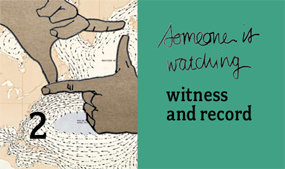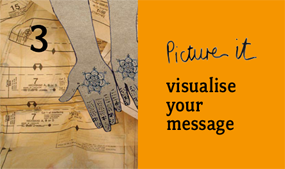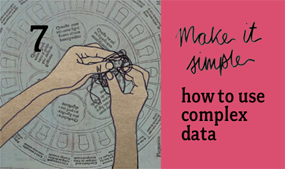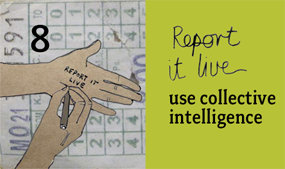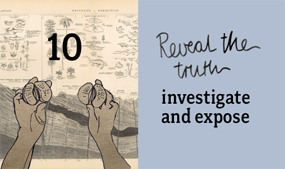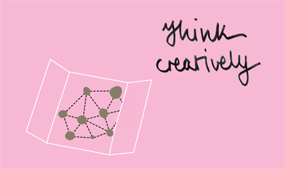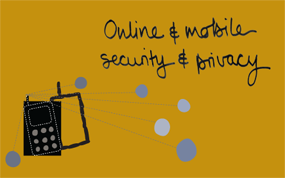 Two short videos showing the death of Neda Agha-Soltan during Iran's post-election protests attained worldwide attention in June 2009.One video was shot by an anonymous man, and was then emailed to supporters and spread quickly to Facebook, where a doctor who appeared in the video trying to save Neda's life left a comment describing the scene and his role. The decision to email the video, rather than directly upload it, was done to protect the man who shot it, and also to circumvent the Iranian government's censorship of the internet after the election. Journalists became aware of the video through email contacts and social network sites. In addition, a second eyewitness video of Neda's death appeared on CNN within hours of being uploaded, and it was copied on YouTube.The video gained many more viewers through links posted on Twitter, along with numerous updates on the situation in Iran. Because the video was posted and spread so quickly, there was little time to consider the implications of such a rapid spread of unedited, firsthand footage. Writing at WITNESS, Priscila Néri says “As concerned citizens, activists, and fellow human beings, how do we balance the need to 'spread the word' of what's unfolding in Iran with the need to respect Neda's dignity as she dies, as well as the grief of her family faced with such tragedy? What is our responsibility when receiving and watching a video like this? Do we repost it? Forward it to everyone we know and encourage them to watch as well?” As the ability for more and more people to capture eyewitness reports and live events with mobile phones and digital cameras increases, the video footage of Neda challenges us to decide how to sensitively and strategically publicise these accounts, especially in volatile and high-pressure moments. It also illustrates the danger people can be put in when they post and re-post footage online: advocates and protesters have since been detained by the government in Iran, and Twitter and Facebook were named in trials against them.
Two short videos showing the death of Neda Agha-Soltan during Iran's post-election protests attained worldwide attention in June 2009.One video was shot by an anonymous man, and was then emailed to supporters and spread quickly to Facebook, where a doctor who appeared in the video trying to save Neda's life left a comment describing the scene and his role. The decision to email the video, rather than directly upload it, was done to protect the man who shot it, and also to circumvent the Iranian government's censorship of the internet after the election. Journalists became aware of the video through email contacts and social network sites. In addition, a second eyewitness video of Neda's death appeared on CNN within hours of being uploaded, and it was copied on YouTube.The video gained many more viewers through links posted on Twitter, along with numerous updates on the situation in Iran. Because the video was posted and spread so quickly, there was little time to consider the implications of such a rapid spread of unedited, firsthand footage. Writing at WITNESS, Priscila Néri says “As concerned citizens, activists, and fellow human beings, how do we balance the need to 'spread the word' of what's unfolding in Iran with the need to respect Neda's dignity as she dies, as well as the grief of her family faced with such tragedy? What is our responsibility when receiving and watching a video like this? Do we repost it? Forward it to everyone we know and encourage them to watch as well?” As the ability for more and more people to capture eyewitness reports and live events with mobile phones and digital cameras increases, the video footage of Neda challenges us to decide how to sensitively and strategically publicise these accounts, especially in volatile and high-pressure moments. It also illustrates the danger people can be put in when they post and re-post footage online: advocates and protesters have since been detained by the government in Iran, and Twitter and Facebook were named in trials against them.
Tools used: Mobile phone cameras, email, YouTube, Twitter, Facebook, blogs
Reach: Hundreds of thousands to millions of people worldwide. Cost: N/A
Resources: Access to data network on mobile phones and internet. Supporters outside of Iran to publish and republish the video. Support of news media to report on the video. Bloggers and advocates to give context to the video in written accounts on blogs and social network sites.
Time: A few hours, from the footage being shot to when it was uploaded. A few more hours before it reached international broadcast media.
Level of Difficulty: 2 out of 5
Links to learn more:
Image: ABCNT
READ THE WHOLE OF TACTIC 2: DOWNLOAD CARD (PDF)

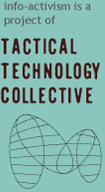
 Two short videos showing the death of Neda Agha-Soltan during Iran's post-election protests attained worldwide attention in June 2009.
Two short videos showing the death of Neda Agha-Soltan during Iran's post-election protests attained worldwide attention in June 2009.
